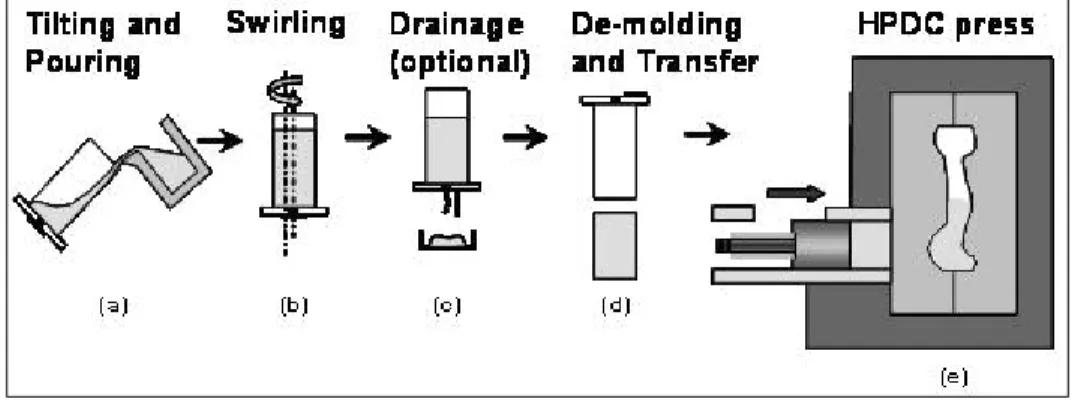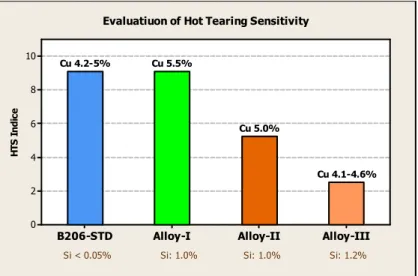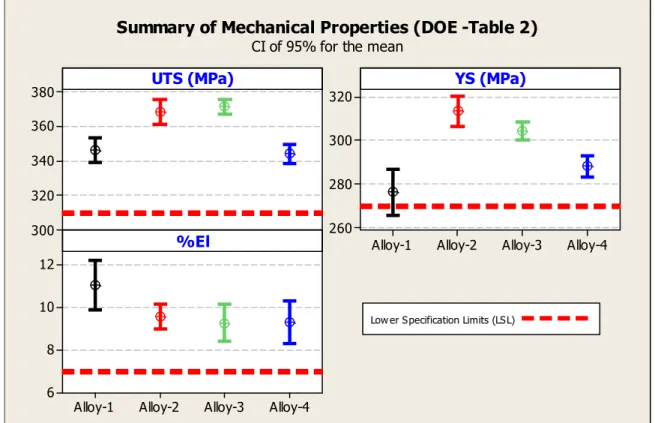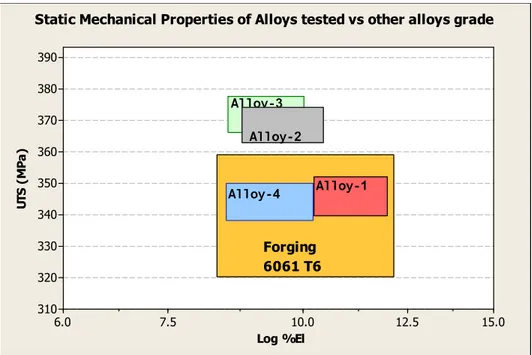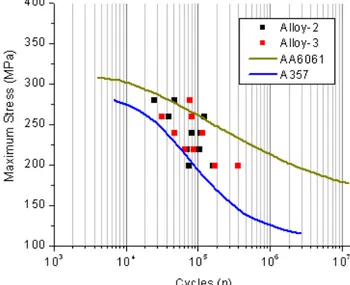Publisher’s version / Version de l'éditeur:
Vous avez des questions? Nous pouvons vous aider. Pour communiquer directement avec un auteur, consultez la
première page de la revue dans laquelle son article a été publié afin de trouver ses coordonnées. Si vous n’arrivez pas à les repérer, communiquez avec nous à PublicationsArchive-ArchivesPublications@nrc-cnrc.gc.ca.
Questions? Contact the NRC Publications Archive team at
PublicationsArchive-ArchivesPublications@nrc-cnrc.gc.ca. If you wish to email the authors directly, please see the first page of the publication for their contact information.
https://publications-cnrc.canada.ca/fra/droits
L’accès à ce site Web et l’utilisation de son contenu sont assujettis aux conditions présentées dans le site LISEZ CES CONDITIONS ATTENTIVEMENT AVANT D’UTILISER CE SITE WEB.
Transactions of Nonferrous Metals Society of China, 20, 9, pp. 1555-1560,
2010-09-29
READ THESE TERMS AND CONDITIONS CAREFULLY BEFORE USING THIS WEBSITE. https://nrc-publications.canada.ca/eng/copyright
NRC Publications Archive Record / Notice des Archives des publications du CNRC : https://nrc-publications.canada.ca/eng/view/object/?id=a2dc22a1-6b27-4392-805d-af0b088874ff https://publications-cnrc.canada.ca/fra/voir/objet/?id=a2dc22a1-6b27-4392-805d-af0b088874ff
Archives des publications du CNRC
This publication could be one of several versions: author’s original, accepted manuscript or the publisher’s version. / La version de cette publication peut être l’une des suivantes : la version prépublication de l’auteur, la version acceptée du manuscrit ou la version de l’éditeur.
For the publisher’s version, please access the DOI link below./ Pour consulter la version de l’éditeur, utilisez le lien DOI ci-dessous.
https://doi.org/10.1016/S1003-6326(09)60338-1
Access and use of this website and the material on it are subject to the Terms and Conditions set forth at
Effect of Si, Cu and Fe on mechanical properties of cast semi-solid 206
alloy
EFFECT OF SI, CU AND FE ON MECHANICAL PROPERTIES OF CAST SEMI-SOLID 206 ALLOYS
Alain Lemieux1, Joseph Langlais2, Dominique Bouchard3, X.-Grant Chen4
1
Rio Tinto Alcan, Arvida Research and Development Centre, Jonquiere, QC, Canada, G7S 4K8
2
Rio Tinto Alcan, Laterrière Works, Chicoutimi, QC, Canada G7N 1A2
3
NRC-Aluminium Technology Centre, Chicoutimi, QC, Canada G7H 8C3
4
Université du Québec à Chicoutimi, Chicoutimi, QC, Canada G7H 2B1
1
alain.lemieux@riotinto.com, 2 joseph.langlais@riotinto.com,
3
dominique.bouchard@imi.cnrc-nrc.gc.ca, 4 xgrant_chen@uqac.ca
Keyword: Semi-solid forming, 206 aluminum alloy, SEED process, Hot tearing, Mechanical properties
Abstract
The present paper reports the development of a modified 206 alloy whose composition is optimized with the aim of minimizing hot tearing during forming. The effect of variations of Si, Cu and Fe contents is investigated using a design of experiment (DOE) approach. Semi-solid slurries were prepared with the SEED process and injected in a high pressure die casting press. The results of hot tearing sensitivity are reported for different alloy variants. The microstructure evolution during the semi-solid preparation is presented along with those from die cast components. The effect of Si, Cu and Fe on mechanical properties in the T7 condition is analyzed. Beyond the benefit on hot tearing reduction, it is shown that the tensile and fatigue properties are compatible to the automotive industry requirements.
Introduction
The 206 alloy belongs to the Al-Cu family that includes some of the strongest and toughest alloys currently available for use as aluminium foundry products. The B206 variant has the potential to contribute to light weighting efforts due to its cast-iron like properties and this has generated the current interest in its use for such components as automotive suspension arms or knuckles [1]. Consequently, this material could be used in a number of applications in the automotive industry, where the minimum elongation requirement is typically 7% to respect the safety needs in suspension part applications [2]. In addition, casting processes for lightweight materials must be in constant evolution to face the increasing challenges for better fuel economy in transportation vehicles.
These challenges can be addressed from different avenues including the use of innovative and reliable processes as well as new alloys. Rheocasting offers many advantages in the fabrication of high integrity near-net-shape components [3]. Semi-solid processing offers greater flexibility to cast certain alloys that are more susceptible to hot tearing because of its higher solid fraction content. However, this advantage is not sufficient to process alloy compositions in traditional 206 alloys because they are generally very prone to hot tearing. Semi-solid processing however offers new opportunities for these difficult to cast alloys due to the distinctive globular structure of the slurry and the lower amount of contraction that the castings undergo upon solidification. A previous study reported a reduction of hot tearing with semi-solid gravity casting with a solid fraction as low as 5% [4]. In that respect, a higher solid fraction is more likely
The objective of the present study was to adapt a 206 alloy to make it suitable for semi-solid die casting applications while offering low hot tearing susceptibility and competitive mechanical properties. A preliminary series of tests using the Constrained Rod Casting (CRC) method was first performed to evaluate the hot tearing susceptibility of liquid alloys. Based on these results, alloy compositions considered the most promising were selected for semi-solid processing. This paper reports the results of casting trials with semi-solid slurries produced with the Rio Tinto Alcan process, dubbed SEED [5].
2 EXPERIMENTAL
A) SEED Process and Die Casting
The rheocasting process SEED is described in Fig. 1 [3], where liquid metal is poured in a metallic container followed by a mechanical mixing (swirling) and an optional drainage of the excess eutectic liquid. The semi-solid slurry is then transferred to the HPDC press (Bühler SC N/53) and injected into the mould. In this study, all tests were performed without drainage.
The parts were cast using two different shapes. The first mold had a “U” shape to better assess the filling behavior as well as the hot tearing sensitivity. Indeed, this geometry was selected because it contained features such as corner radii and section changes that contributed to promote stress concentration and hot tearing [3]. The second series of castings used a rectangular wedge mold that was designed to optimize the number of test bars for mechanical property evaluations. All process parameters of the slurry preparation and die casting were held fix.
Fig. 1 Diagram of the SEED process (a-d) and HPDC press (e)
B) Hot tearing assessment
Table 1 lists the alloys that were processes with SEED and cast in the “U” shape mold for hot tearing assessment. The contents in Si and Cu are shown. The content of the remaining chemical elements conformed to a standard B206 alloy composition. The hot tearing susceptibility (HTS) index on the castings was determined using liquid dye penetrant. The index was based on the number of hot tears and their lengths [3].
Table 1 Chemical composition for hot tearing assessment (%wt) Alloy ID Si (%wt) Cu (%wt) Standard B206 0.05 4.2-5.0 Alloy-I 1.0 5.5 Alloy-II 1.0 5.0 Alloy-III 1.2 4.1-4.6
C) Die Cast Parts for Tensile and Fatigue Testing
A series of wedge shape castings was produced from which test specimens were cut for tensile and fatigue testing as well as metallographic analyses. The alloys that were rheocast are those shown in Table 2 and the contents of Si, Fe and Cu were varied according a design of experiment approach (DOE). Once more, the balance of chemical composition conformed to a standard B206 alloy composition for permanent mold casting.
The castings for tensile and fatigue testing were heat-treated to the T7 condition as follows: solution heat at 500°C for 10 hours, water quench at 65°C, natura l ageing for 24 hours and artificial aging at 195°C for 4 hours. The tensile evaluation was carried out according to the ASTM standard B557-06.
Table 2 Chemical composition (%wt) based on statistical design matrix (fractional half DOE)
Alloy ID Si (%wt) Fe (%wt) Cu (%wt) Alloy -1 1.2 0.07 3.8 Alloy -2 0.8 0.07 4.4 Alloy -3 1.2 0.15 4.4 Alloy -4 0.8 0.15 3.8
Two alloys (Alloy-2 and Alloy-3) were investigated for the unnotched axial fatigue testing at room temperature according to the ASTM standard E466-07. The reduced section had a length of 34.8 mm and a diameter of 6.35 mm. Ten bars were machined for each alloy and the tests were performed with a standard servo-hydraulic machine (MTS model 810) under an axial load with a stress ratio of 0.1 and a load frequency of 30 Hz. The tests were performed at the following maximum stress levels: 200, 220, 240, 260 and 280 MPa. Each test was repeated once.
3 RESULTS AND DISCUSSION
a) Hot Tearing Sensitivity
The results of hot tearing sensitivity were compiled as the HTS index for alloys presented in Table 1. Fig. 2 shows that it is possible to reduce significantly the HTS index from 9 to 2.5 with a Si level of around
of Cu above 4.6% could be detrimental on hot tearing. In the present case, the fine globular microstructure obtained from the SEED process combined to the silicon addition provides a microstructure that reduced hot tearing sensibility. Moreover, the partially solidified metal results in less solidification contraction to compensate for strains by movement of both liquid and solid [4]. Consequently, the study of mechanical properties was based on variants of Alloy-II and Alloy-III using a silicon level around 1% and a copper level below 5%.
Fig. 2 Comparison of hot tearing sensitivity for various Cu and Si contents.
b) Microstructure of Slurry
The semi-solid slurries produced with the SEED process had the following characteristics i) stable mass, ii) ease of demoulding, iii) uniform surface and iv) good consistency for die filling . The process conditions were sufficiently robust to produce sound castings with all tested alloys. The typical microstructure of the semi-solid castings is shown in Fig. 3. The uniform fine globular grains provided the desirable die filling behavior.
A)
B)
Fig. 3 Representative microstructures of casting produced by the SEED process (Alloy-2 as-cast). ! " #
c) Mechanical properties
The partial factorial plan presented in Table 2 was used to study the effect of silicon, iron and copper on the mechanical properties. It should be noted that this plan had a resolution level of III, which excluded the analysis of two-factor interactions. Accordingly, only the main effects were considered in the analysis.
The mechanical properties obtained from 4 alloys are illustrated in Fig. 4. For comparison, the figure also includes a thick dotted line that represents the low specification limits (LSL) typically required in the structure components for automotive applications [2]. The best performance for the ultimate tensile strength (UTS) and yield strength (YS) were obtained with Alloy-2 and Alloy-3. These two alloys were not the best in terms of elongation but their values were well above the minimum requirement of 7%. It should also be noticed that Alloy-2 and Alloy-3 had both a copper content of 4.4 % but different iron contents, 0.07 % and 0.15 % respectively. This indicates that the impact of the iron content on the mechanical properties is low. This could bring a great advantage for production and recycling.
Fig. 4 Comparison of mechanical proprieties in T7 condition.
Fig. 5 provides an illustration of the mechanical property domains for the four alloys with respect to the ultimate tensile strength and elongation. It can be clearly seen that alloy 2 and alloy 3 provide the best performance. A domain for 6061-T6 forged material is also shown on the graph [6]. The properties of Alloy-2 and Alloy-3 are significantly above the case 6061-T6 forged material.
$ %&' ( ) %&' (
** ! & + '! , ! # % - . (
Fig. 5 Static mechanical property domains based on 95% confidence intervals for the four tested alloys in
comparison with 6061-T6 forgings.
Normalized Pareto diagrams for the effect of Si, Fe and Cu on tensile properties are shown in Fig. 6. The diagrams show that the strongest positive effect on the ultimate tensile strain (UTS) and the yield strain (YS) are provided by copper (increasing from 3.8 to 4.4% in the study). This is due to an increase of the volume fraction of fine CuAl2 precipitate particles in the aluminum matrix at higher copper level. The
typical micrographs of semi-solid castings after T7 are shown in Fig. 7 for Alloy-3 and Alloy-4. It can be seen that Alloy-3 with 4.4% Cu has a higher volume fraction and more uniform distribution of these precipitates than that of Alloy 4 with 3.8% Cu. A copper content of 3.8% is also below the specification limit for standard 204 and 206 alloys.
Fig. 6 Pareto of normalized effect of mechanical properties results.
' ' / " $ %& ' ( & + '! , ! # # # # + ! # "! 0 !" " 0 1 2 !* 3 0 1 0 1 $ ) "
The graphs in Fig. 6 also show that silicon (increasing from 0.8 to 1.2%) slightly decreases the yield stress (YS). The variation of iron (from 0.07% to 0.15%) had the lowest effect on the UTS and the YS. The Pareto diagram for elongation (%El) shows that the influence of Cu, Si and Fe is relatively weak compared to the effect of theses elements on the ultimate and yield stresses.
Fig. 7 Typical micrographs of semi-solid castings after T7 showing the fine CuAl2 precipitate particles in the
aluminum matrix: a) Alloy-3 with the best results (UTS=386 MPa, YS=317 MPa, %El 10,7 %) and b) Alloy-4 with UTS=355 MPa, YS=300 MPa, %El 6.9%
d) Fatigue evaluation
The fatigue results are presented in Fig 8. No significant correlation between fatigue and composition for Alloy-2 and Alloy-3 was observed. The tensile properties of these alloys also had a comparable behavior in terms of stress-strain relationship (see Fig. 5). For comparison the graph also includes typical axial fatigue properties of an AA6061-T6 wrought alloy and an A357-T6 foundry alloy [7], both at a stress ratio of R=0. Although the stress ratio in the present investigation was slightly higher (R = 0.1), it is clear that the fatigue properties of the semi-solid castings from Alloy-2 and Alloy-3 are superior to that of traditional A357 castings. Its values are also close to those of a typical AA6061 wrought alloy.
4 CONCLUSIONS
1) The SEED technology can accommodate fairly large compositional variations in the 206 alloy group to produce sound semi-solid castings.
2) The addition of silicon (Si) up to 1.2% and iron (Fe) up to 0.15% had no detrimental effect on the mechanical properties. Castings produced with the SEED process combined with modified 206 alloys can attain elevated mechanical properties compatible to automotive industry requirements.
3) Increasing the silicon content was beneficial to reduce hot tearing. A uniform and fine grain size obtained with the SEED process was also beneficial.
4) The fatigue properties of two best modified 206 alloys was superior to that of an A357 foundry alloy and approached that of an AA6061 wrought alloy.
ACKNOWLEDGEMENTS
The authors are grateful to Rio Tinto Alcan for allowing permission to publish this work. The authors wish to express special thanks to their colleagues at Rio Tinto Alcan, Mr. Clément Boudreault, at the National Research Council of Canada (NRC), Mr Dany Drolet and Miss Marie-Ève Larouche, at the STAS, Mr Stéphane Leclerc, as well as others who have contributed to the development of the SEED process.
REFERENCES
[1] D. JEAN, J. F. MAJOR, “Heat Treatment and Corrosion Resistance of B206 Aluminum Alloy”
[2] G. SIGWORTH1 & F. MAJOR, “Factors Influencing the Mechanical Properties of B206 Alloy Castings”,
Light Metals 2006, Edited by Travis J. Galloway pp. 795-799.
[3] J. LANGLAIS, N. ANDRADE, A. LEMIEUX, X.G. CHEN AND L. BUCHER. “The Semi-Solid Forming of
an Improved AA6061 Wrought Aluminum”, Solid State Phenomena Vols. 141-143 (2008) pp 511-516
[4] J.WANNASIN, DSCHWAM, J.A. YURKO, C ROHLOFF AND G.WOYCIK, S2P 2006 “Hot Tearing
Susceptibility and Fluidity of Semi-Solid Gravity Cast Al-Cu Alloy”, Vols 116-117 (2006) pp 76-79
[5] DOUTRE, D., LANGLAIS, J., ROY, S., The SEED Process for Semi-Solid Forming, Paper presented at the
8th International Conference on Semi-Solid Processing of Alloys and Composites, Cyprus (September 2004).
[6] J. G. KAUFMAN AND E. L. ROOY, Aluminum Alloy Castings, Properties, Processes, and Applications,
ASM International, 2004.
[7] J. G. KAUFMAN, Properties of Aluminum Alloys, Fatigue Data and the Effects of Temperature, Product
